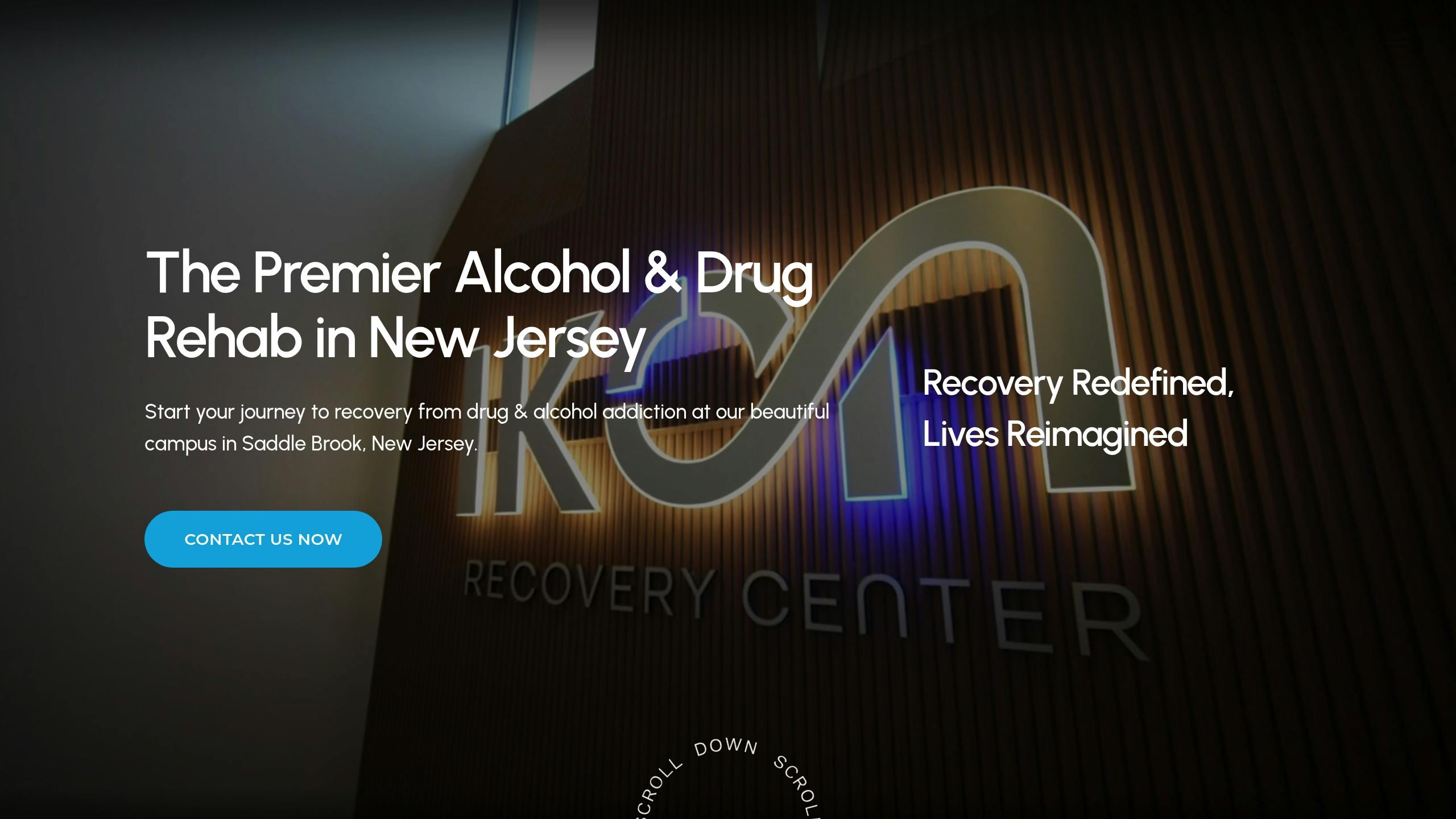Uncategorized
How to Build a Relapse Prevention Plan Step by Step

Medically Reviewed By
Written By
James Mikhail
Uncategorized

Medically Reviewed By
Written By
James Mikhail
Relapse prevention is crucial for long-term recovery. A well-structured plan helps you recognize triggers, manage risky situations, and build a solid support network. Here’s how you can create one:
Daily Use: Incorporate recovery-focused activities like journaling, therapy, and progress tracking into your routine. Update your plan regularly to adapt to life changes.
Quick Tip: Use tools like the HALT principle (Hungry, Angry, Lonely, Tired) to spot early warning signs and prevent setbacks. Recovery is about consistent, manageable actions that support your well-being.
A strong relapse prevention plan focuses on three main areas: understanding triggers, managing risky situations, and building a reliable support network. Let’s dive into these components.
Triggers are situations or feelings – emotional, environmental, or social – that remind you of past substance use and may lead to cravings . Studies show that even seeing images tied to substance use can activate brain pathways linked to cravings .
| Trigger Type | Examples | Prevention Strategies |
|---|---|---|
| Emotional | Stress, anxiety, depression | Mindfulness, therapy, relaxation |
| Environmental | Former hangouts, parties | Avoidance, sober-friendly activities |
| Social | Old peers, peer pressure | New social groups, recovery meetings |
| Physical | Fatigue, illness, hunger | Balanced meals, rest, regular check-ups |
A helpful tool is the HALT principle: Hungry, Angry, Lonely, Tired. Recognizing these states early can help prevent relapse .
Once you’ve identified your triggers, it’s time to prepare for challenging moments. The American Society of Addiction Medicine explains:
"Persistent risk and/or recurrence of relapse, after periods of abstinence, is another fundamental feature of addiction. This can be triggered by exposure to rewarding substances and behaviors, by exposure to environmental cues to use, and by exposure to emotional stressors that trigger heightened activity in brain stress circuits."
To navigate tough situations, consider these strategies:
A solid support system is essential to recovery. This team might include:
Support isn’t just for emergencies – it’s a daily part of recovery. Attend group meetings, keep therapy appointments, and stay connected with people who encourage your progress .
"Your support network is the people who cheer for you when you succeed, lend an ear when you need someone to talk to, and help you get back up when you fall."
Involving family members in your recovery can also make a big difference. Clear communication and healthy boundaries ensure their involvement strengthens your plan .
Use what you’ve learned about triggers and support systems to create a focused, step-by-step plan. By combining your understanding of past experiences with practical strategies, you can turn insights into meaningful actions.
Take a closer look at your recovery journey to spot patterns that could help you prevent future setbacks.
Here are some areas to reflect on:
| Area to Review | Questions to Consider | Why It Matters |
|---|---|---|
| Past Triggers | What situations led to cravings? | Identifies risk patterns |
| Coping Methods | Which strategies worked or didn’t work? | Builds on successful tactics |
| Support System | Who provided the most effective help? | Strengthens your support network |
Look at any setbacks as opportunities to learn and improve your plan . Also, pay attention to early warning signs that might signal potential challenges ahead.
Relapse often starts gradually, with warning signs appearing well before actual substance use .
"Relapse prevention is a pivotal component of any treatment plan for alcoholism or any other substance abuse disorder."
Be on the lookout for these warning signs:
Studies show that interpersonal conflicts often contribute to relapse. Managing relationship stress is an important part of staying on track.
Create a set of clear, actionable responses to tackle challenges effectively:
Having these steps written out makes it easier to act when faced with challenges.
Incorporate your relapse prevention plan into your everyday routine to support your recovery journey . Scheduling specific recovery-focused activities each day helps you build consistent, healthy habits. Here’s an example of how you might organize your day:
| Time of Day | Recovery Activities | Purpose |
|---|---|---|
| Morning | Meditation, journaling, exercise | Start your day on a positive note and manage stress |
| Afternoon | Support meetings, therapy sessions | Stay accountable and connected |
| Evening | Recovery reading, support calls | Reflect on the day and prepare for tomorrow |
| Weekly | Progress tracking, self-assessment | Measure your growth and adjust as needed |
Using a daily planner can help you track key elements like exercise, meals, and sleep. This not only helps identify potential triggers but also reinforces healthy routines . Regular check-ins with your support network should be part of your schedule, and taking time each evening to reflect on the day’s challenges and wins can set the tone for the next day . As your needs and circumstances change, update your plan to ensure it stays effective and relevant.
While daily routines are essential, taking time to periodically review your plan ensures it continues to meet your needs . Life evolves, and your strategies should evolve with it. Regular reviews allow you to refine your goals and adjust your approach as needed.
Here’s a suggested schedule for reviewing your plan:
| Review Period | Focus | Actions |
|---|---|---|
| Weekly | Identify triggers and reactions | Document new coping strategies |
| Monthly | Evaluate your support network | Add helpful contacts; remove inactive ones |
| Quarterly | Reflect on life changes | Adjust stress management techniques as needed |
| Annually | Assess overall progress | Update long-term goals and strategies |
Frequent assessments help you fine-tune your approach . Small, steady adjustments based on your daily experiences ensure your plan remains aligned with your ongoing progress .
It’s important to know when to seek professional help, especially if your personal strategies for avoiding relapse start to falter. With relapse rates remaining high , recognizing warning signs early can make a big difference. Here are some key indicators that you might need expert support:
| Warning Sign | What It Means | Action Needed |
|---|---|---|
| More Frequent Triggers | Increasing urges to use | Seek professional counseling |
| Isolation | Pulling away from your support network | Join therapy groups |
| Denial | Downplaying risks or concerns | Schedule an assessment |
| Declining Self-Care | Neglecting sleep, diet, or exercise | Consider intensive outpatient care |
Programs often use therapies like Cognitive Behavioral Therapy (CBT) and Mindfulness-Based Relapse Prevention (MBRP) to help you identify triggers and build effective coping techniques .

If you’re looking for structured and personalized care, professional programs can provide the support you need. One option is Ikon Recovery Center in Saddle Brook, NJ, which offers a variety of treatment plans tailored to individual needs.
For immediate assistance, you can call SAMHSA‘s National Helpline at 1-800-662-HELP, available 24/7.
A relapse prevention plan is just the beginning of a broader recovery journey. Research indicates that around 60% of people dealing with substance dependence eventually reach sustained recovery . This shows that long-term success is possible with a well-thought-out approach. The next phase builds on the prevention plan, focusing on daily habits that help maintain recovery progress.
| Recovery Area | Daily Habits | Long-term Benefits |
|---|---|---|
| Physical Health | Exercise regularly, eat balanced meals | Reduced cravings, better mood |
| Mental Wellness | Practice mindfulness, keep a journal | Improved stress management |
| Social Support | Attend weekly meetings, check in with a sponsor | Ongoing accountability |
| Life Structure | Stick to a sleep schedule, follow routines | Greater stability |
A balanced lifestyle is key to supporting long-term recovery. By incorporating these habits into your daily routine, you can strengthen the foundation of your recovery.
Here are some effective ways to build on your progress:
Track Your Journey: Keep a recovery journal to document daily challenges and successes. This can help you identify patterns and stay motivated .
Adjust as Needed: What works early in recovery might need tweaking over time. Regular check-ins with your care team can help ensure your plan stays effective and relevant .
Expand Your Support Network: Strong social connections have been linked to better health outcomes and even longer lifespans – up to seven years, according to some studies . Look for local recovery groups or use resources like SAMHSA’s National Helpline (1-800-662-HELP).
Recovery isn’t about making big, dramatic changes all at once. Instead, focus on consistent, manageable actions that support your well-being and strengthen your relapse prevention plan over time.